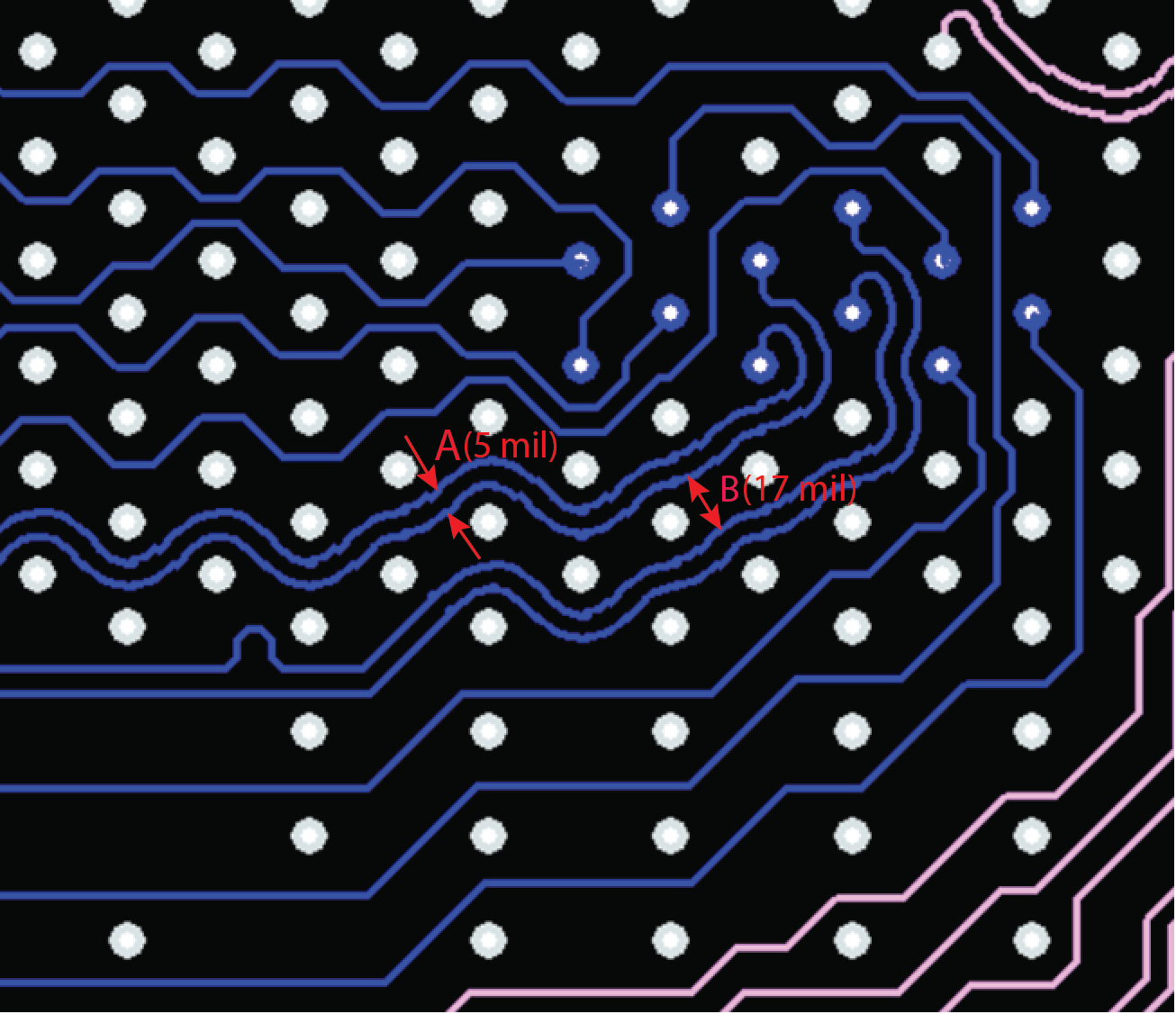Visible to Intel only — GUID: vdb1659556094030
Ixiasoft
1. About the External Memory Interfaces Intel Agilex® 7 M-Series FPGA IP
2. Intel Agilex® 7 M-Series FPGA EMIF IP – Introduction
3. Intel Agilex® 7 M-Series FPGA EMIF IP – Product Architecture
4. Intel Agilex® 7 M-Series FPGA EMIF IP – End-User Signals
5. Intel Agilex® 7 M-Series FPGA EMIF IP – Simulating Memory IP
6. Intel Agilex 7 M-Series FPGA EMIF IP – DDR4 Support
7. Intel Agilex® 7 M-Series FPGA EMIF IP – DDR5 Support
8. Intel Agilex 7 M-Series FPGA EMIF IP – LPDDR5 Support
9. Intel Agilex® 7 M-Series FPGA EMIF IP – Timing Closure
10. Intel Agilex® 7 M-Series FPGA EMIF IP – Controller Optimization
11. Intel Agilex® 7 M-Series FPGA EMIF IP – Debugging
12. Document Revision History for External Memory Interfaces Intel Agilex® 7 M-Series FPGA IP User Guide
3.1.1. Intel Agilex® 7 M-Series EMIF Architecture: I/O Subsystem
3.1.2. Intel Agilex® 7 M-Series EMIF Architecture: I/O SSM
3.1.3. Intel Agilex® 7 M-Series EMIF Architecture: I/O Bank
3.1.4. Intel Agilex® 7 M-Series EMIF Architecture: I/O Lane
3.1.5. Intel Agilex® 7 M-Series EMIF Architecture: Input DQS Clock Tree
3.1.6. Intel Agilex® 7 M-Series EMIF Architecture: PHY Clock Tree
3.1.7. Intel Agilex® 7 M-Series EMIF Architecture: PLL Reference Clock Networks
3.1.8. Intel Agilex® 7 M-Series EMIF Architecture: Clock Phase Alignment
3.1.9. User Clock in Different Core Access Modes
4.2.1. ref_clk for EMIF
4.2.2. core_init_n for EMIF
4.2.3. usr_async_clk for EMIF
4.2.4. usr_clk for EMIF
4.2.5. usr_rst_n for EMIF
4.2.6. s0_axi4 for EMIF
4.2.7. mem for EMIF
4.2.8. i3c for EMIF
4.2.9. mem_lbd for EMIF
4.2.10. mem_lbs for EMIF
4.2.11. oct for EMIF
4.2.12. s0_axi4lite_clk for EMIF
4.2.13. s0_axi4lite_rst_n for EMIF
4.2.14. s0_axi4lite for EMIF
6.2.4.1. Address and Command Pin Placement for DDR4
6.2.4.2. DDR4 Data Width Mapping
6.2.4.3. General Guidelines - DDR4
6.2.4.4. x4 DIMM Implementation
6.2.4.5. Specific Pin Connection Requirements
6.2.4.6. Command and Address Signals
6.2.4.7. Clock Signals
6.2.4.8. Data, Data Strobes, DM/DBI, and Optional ECC Signals
6.3.5.1. Single Rank x 8 Discrete (Component) Topology
6.3.5.2. Single Rank x 16 Discrete (Component) Topology
6.3.5.3. ADDR/CMD Reference Voltage/RESET Signal Routing Guidelines for Single Rank x 8 and Single Rank x 16 Discrete (Component) Topologies
6.3.5.4. Skew Matching Guidelines for DDR4 Discrete Configurations
6.3.5.5. Power Delivery Recommendations for DDR4 Discrete Configurations
6.3.5.6. Intel Agilex® 7 M-Series EMIF Pin Swapping Guidelines
7.2.1. Intel Agilex® 7 M-Series FPGA EMIF IP Interface Pins
7.2.2. Intel Agilex® 7 M-Series FPGA EMIF IP Resources
7.2.3. Pin Guidelines for Intel Agilex® 7 M-Series FPGA EMIF IP
7.2.4. Pin Placements for Intel Agilex 7 M-Series FPGA DDR5 EMIF IP
7.2.5. Intel Agilex® 7 M-Series EMIF Pin Swapping Guidelines
7.3.1. PCB Stack-up and Design Considerations
7.3.2. General Design Considerations
7.3.3. DDR Differential Signals Routing
7.3.4. Ground Plane and Return Path
7.3.5. RDIMM, UDIMM, and SODIMM Break-in Layout Guidelines
7.3.6. DRAM Break-in Layout Guidelines
7.3.7. DDR5 PCB Layout Guidelines
7.3.8. DDR5 Simulation Strategy
7.3.7.1. DDR5 Discrete Component/Memory Down Topology: up to 40-Bit Interface (1 Rank x8 or x16, 2 Rank x8 or x16)
7.3.7.2. Routing Guidelines for DDR5 Memory Down: 1 Rank or 2 Rank (x8 bit or x16 bit) Configurations
7.3.7.3. Routing Guidelines for DDR5 RDIMM, UDIMM, SODIMM and LRDIMM Configurations
7.3.7.4. Example of a DDR5 layout on Intel FPGA Platform Board
11.1. Interface Configuration Performance Issues
11.2. Functional Issue Evaluation
11.3. Timing Issue Characteristics
11.4. Verifying Memory IP Using the Signal Tap Logic Analyzer
11.5. Generating Traffic with the Test Engine IP
11.6. Guidelines for Developing HDL for Traffic Generator
11.7. Debugging with the External Memory Interface Debug Toolkit
Visible to Intel only — GUID: vdb1659556094030
Ixiasoft
6.3.4. Intel Agilex® 7 M-Series EMIF-Specific Routing Guidelines for Various DDR4 Topologies
This section discusses EMIF-related layout guidelines for Intel Agilex® 7 M-Series devices.
The Intel Agilex® 7 M-Series family pin floorplan is a HEX pattern with 1mm pitch. The following figure shows an example of DDR routing for an IO12 (one-byte data) on PCB within FPGA fan-out region.
Figure 22. Intel Agilex® 7 1mm HEX pin pattern/floorplan and recommended routing for one byte of data (IO12)


The following general notes apply to the EMIF routing guidelines tables in subsequent topics:
- All spacing requirements are the minimum requirement to be met on PCB in EMIF routing guideline table.
- Breakout (BO1/BO2) spacings have two different values in guideline tables. The first value represents minimum spacing between two signals routed as a pair (tightly coupled signals); this value is marked as A (5 mil) in the above figure. The second value represents minimum spacing between two pairs, and is marked as B (17 mil) in the above figure.
- Main route (M) spacings have both value in mil and formula. In formula, h represents the trace-to-nearest-reference-plane height or distance. In cases using a stackup different than the reference stackup, board designers shall use formula to calculate the correct spacing requirements.
- There is no differential impedance target for CLK nor DQS. Board designers shall follow single-ended impedance target and keep the signals within the pair closely coupled, within 3-4 mil spacing. For information on DQS/DQSB and CLK/CLKB, refer to the Skew Matching Guidelines for DDR4 DIMM Topologies and Skew Matching Guidelines for DDR4 Discrete Topologies tables, for DIMM and discrete device implementations, respectively.
- In guideline tables, SL stands for stripline routing recommendation and US stands for upper surface (Microstrip) routing recommendation.
- The trace width value/geometry in guideline tables stands for trace designed for target impedance based on the reference stackup. This trace geometry shall be designed based on actual stackup and target impedance in guideline table.
- In guideline tables, BO1 and BO2 represent fan-out routing lengths. M stands for out of fan-out (PCB main) routing lengths